The ocean is a vast, mysterious expanse teeming with life forms that have evolved intricate relationships over millions of years. Among these relationships are unique interdependencies where sea creatures rely on one another for survival, creating an underwater community that exemplifies the delicate balance of nature. From mutualistic partnerships to predator-prey dynamics, the ocean is a living tapestry of collaboration and competition. In this article, we’ll dive into 13 fascinating examples of sea creatures that feed off each other, showcasing the diverse and complex interactions that keep our oceans thriving.
1. The Classic Symbiosis of Clownfish and Anemones
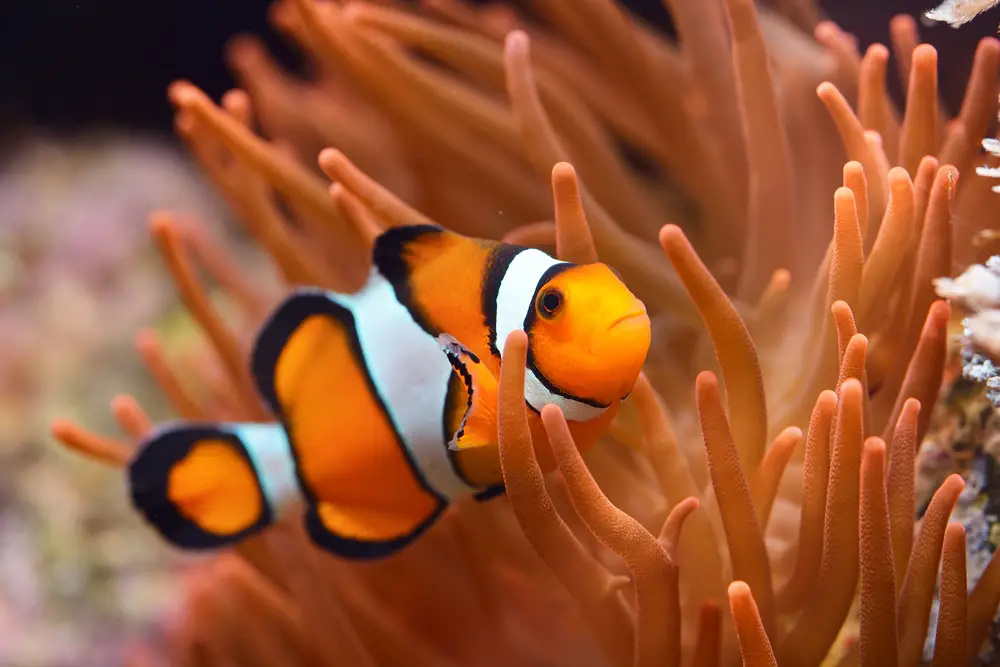
The vibrant clownfish and their host sea anemones are one of the most well-known examples of mutualism in the ocean. These colorful fish call the stinging tentacles of anemones their home, where they find shelter from predators. In return, clownfish provide the anemones with nutrients through their waste, as well as increased water circulation as they swim around. According to National Geographic, this relationship benefits both species, as the anemones protect the clownfish from predators and gain nourishment from them.
Clownfish have a mucus coating that makes them immune to the anemone’s potent toxins, allowing them to live safely among the tentacles. This partnership exemplifies a win-win situation, where both parties gain something crucial for their survival. It’s a delicate dance of give-and-take that has captured the fascination of marine biologists and ocean lovers alike. The beauty of this relationship lies in its simplicity and efficiency, making it a staple example in biology classes around the world.
2. Cleaner Fish and Their “Clients”
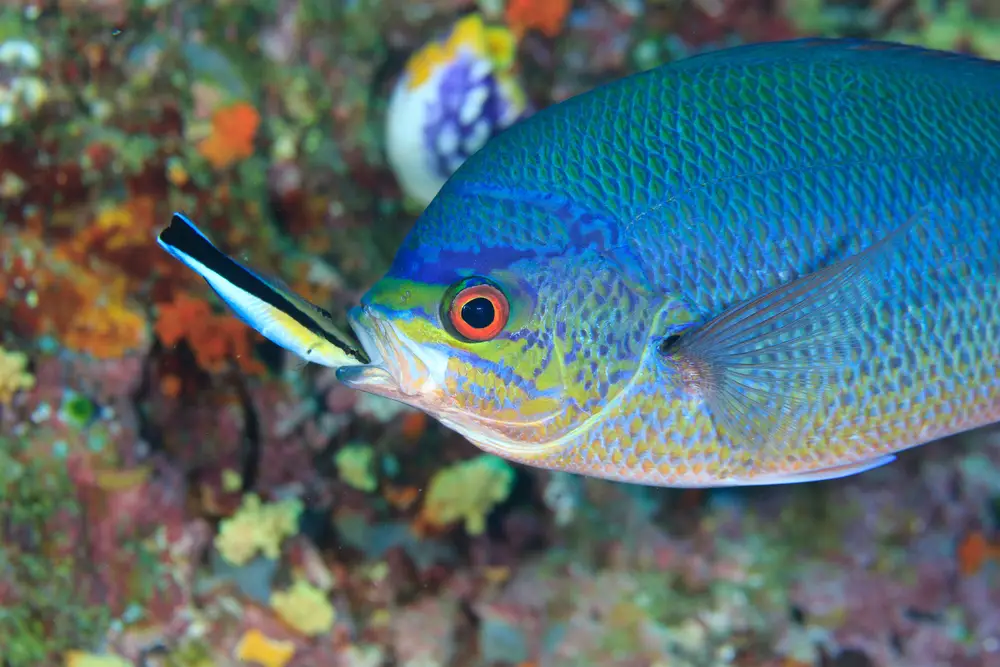
In the ocean, cleanliness is next to survival, and cleaner fish play a vital role in maintaining the health of other marine animals. These fish, such as the cleaner wrasse, set up cleaning stations on coral reefs where larger fish, referred to as “clients,” come for a grooming session. The cleaner fish feed on parasites, dead skin, and mucus, providing a valuable service to their clients by keeping them healthy and free from irritations. According to a study published on ScienceDirect, this relationship is so crucial that cleaner fish are even shown to influence the behavior and population dynamics of the reef community.
Clients often wait patiently in line for their turn and even signal when they’re ready to be cleaned. This mutualistic relationship is a testament to nature’s efficiency, with both species benefiting significantly. The cleaner fish receive a steady food supply, while the clients enjoy better health and increased chances of survival. This interaction is a fascinating example of cooperation in the wild, illustrating the complex web of life that exists beneath the ocean’s surface.
3. The Little-Known Partnership of Shrimp and Gobies
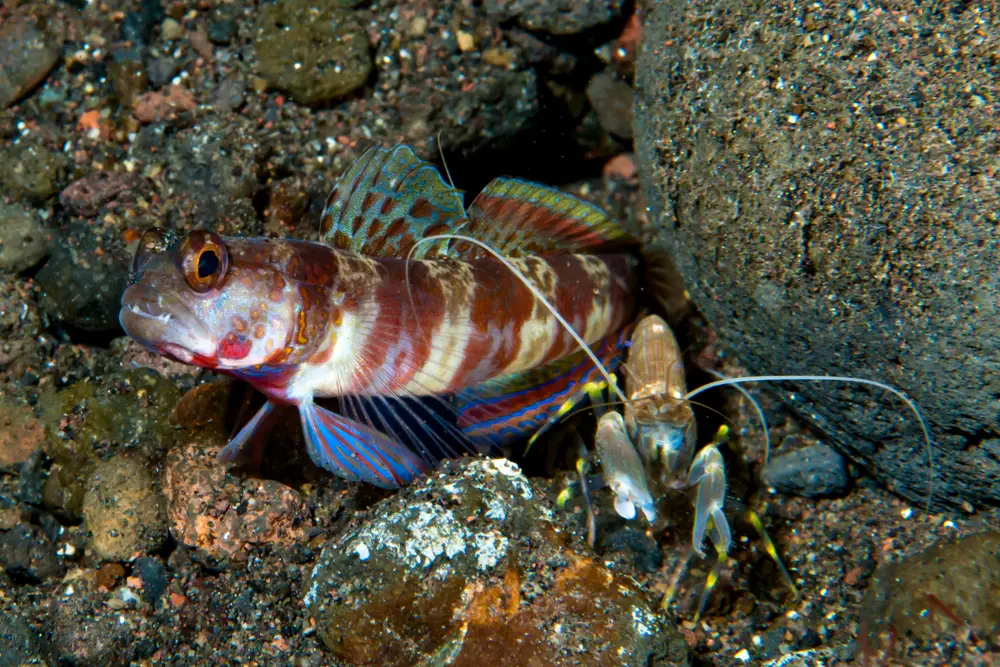
In the sandy bottoms of tropical and subtropical waters, a remarkable partnership exists between certain species of shrimp and gobies. These two creatures share a burrow, with the shrimp taking on the role of an industrious digger and the goby acting as a vigilant lookout. According to Smithsonian Magazine, this partnership is a brilliant example of mutualism, where the shrimp provides the goby with a safe place to live, and in return, the goby warns the shrimp of approaching danger.
The shrimp, nearly blind, relies heavily on the goby to alert it of potential threats. As it digs and maintains their shared burrow, the shrimp keeps one of its antennae in constant contact with the goby, ready to retreat at the first sign of danger. This relationship showcases the incredible adaptations and cooperation that can occur between different species. Together, they create a safe haven in the perilous world of the ocean floor, demonstrating a sophisticated level of communication and teamwork.
4. The Hunter and Scavenger Dynamic of Sharks and Remoras
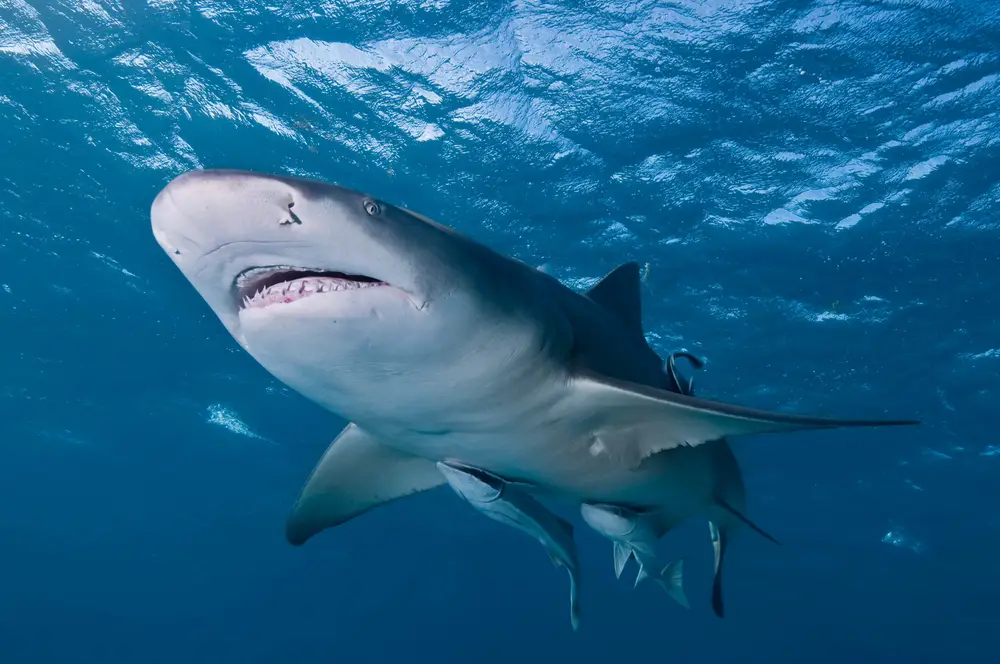
Sharks, the apex predators of the ocean, often have a small entourage of remoras, also known as suckerfish, hitching a ride on their bodies. This relationship is primarily commensal, meaning the remora benefits while the shark remains unaffected. Remoras attach to sharks using a specialized suction disk on their heads, which allows them to ride along and feed on the leftovers from the shark’s meals. This arrangement provides remoras with a steady supply of food without expending much energy, highlighting the opportunistic nature of these small fish.
While the shark doesn’t directly benefit from the remora, the presence of these fish doesn’t harm it either. Some biologists suggest that remoras might help keep the shark free of parasites by cleaning its skin, though this benefit is still debated. This fascinating dynamic showcases how different species can coexist in the ocean, with one reaping the rewards while the other remains indifferent. The relationship between sharks and remoras is a perfect example of the complex and varied interactions that occur in marine ecosystems.
5. The Mutualistic Bond of Coral and Zooxanthellae
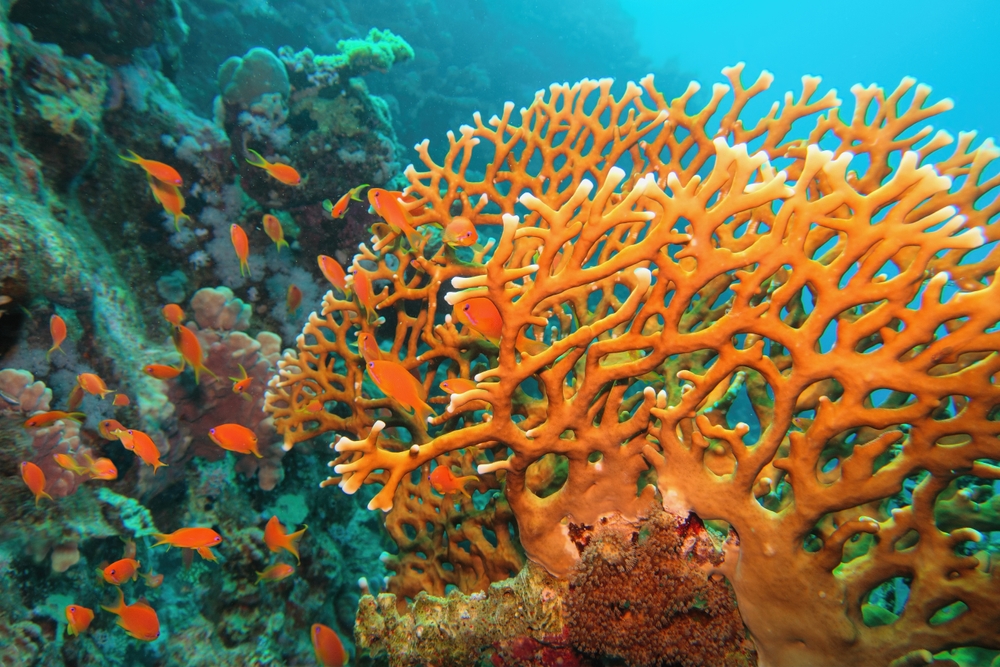
Coral reefs, known as the rainforests of the sea, owe much of their vibrant colors and productivity to microscopic algae called zooxanthellae. These tiny plants live within the coral’s tissues, where they perform photosynthesis and produce oxygen and nutrients that the coral polyps use to grow and thrive. In return, the coral provides the zooxanthellae with a protected environment and the compounds necessary for photosynthesis. This symbiotic relationship is crucial for the health and sustainability of coral reefs, supporting a vast diversity of marine life.
The partnership between coral and zooxanthellae is delicate, as changes in water temperature or quality can stress the coral, leading to the expulsion of zooxanthellae and resulting in coral bleaching. This demonstrates the fragility of this relationship and the impact of environmental changes on ocean ecosystems. Despite these challenges, the mutualistic bond between coral and zooxanthellae remains a cornerstone of marine ecology. It exemplifies how interdependent relationships drive the productivity and resilience of the ocean’s ecosystems.
6. The Predatory Relationship of Octopuses and Crustaceans
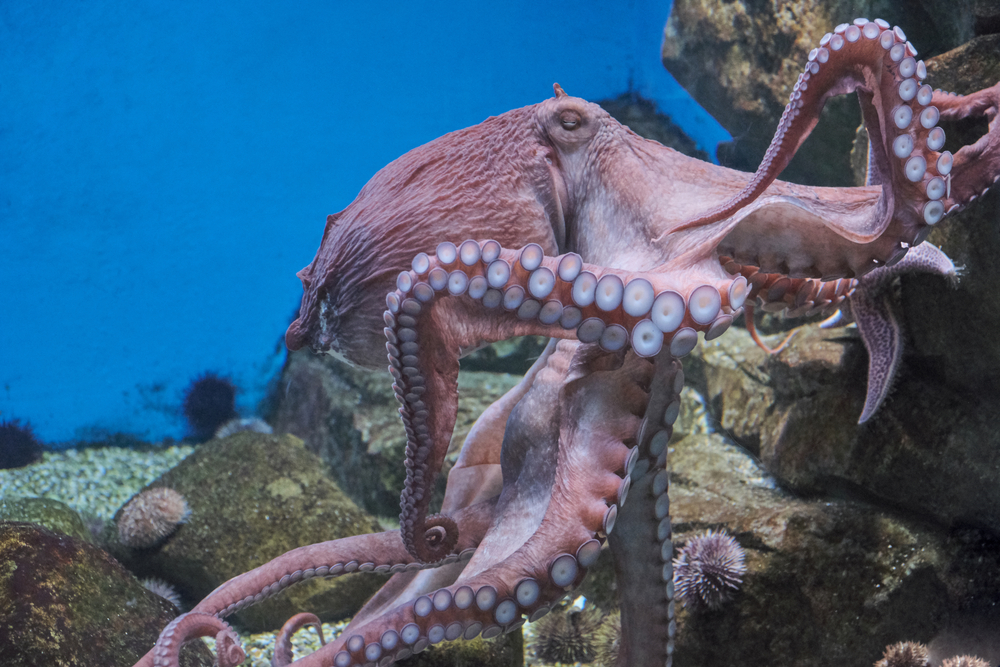
Octopuses are highly intelligent predators that have developed a taste for crustaceans such as crabs and lobsters. These cephalopods use their remarkable problem-solving abilities and dexterous arms to hunt and capture their prey, often employing stealth and camouflage to get close without being detected. Once within reach, an octopus will use its powerful suckers to grasp the crustacean and bring it to its sharp beak to consume. This predator-prey relationship showcases the octopus’s impressive adaptations and its role as a skilled hunter in marine ecosystems.
The interaction between octopuses and crustaceans is a classic example of the constant struggle for survival in the ocean. While octopuses benefit from a nutritious meal, crustaceans have evolved various defenses, such as hard shells and swift movements, to evade capture. This dynamic has resulted in an evolutionary arms race, with each party continuously adapting to outsmart the other. It highlights the complexity and intricacy of ocean ecosystems, where every interaction has the potential to shape the development of species over time.
7. The Cooperative Hunting of Dolphins and Seabirds
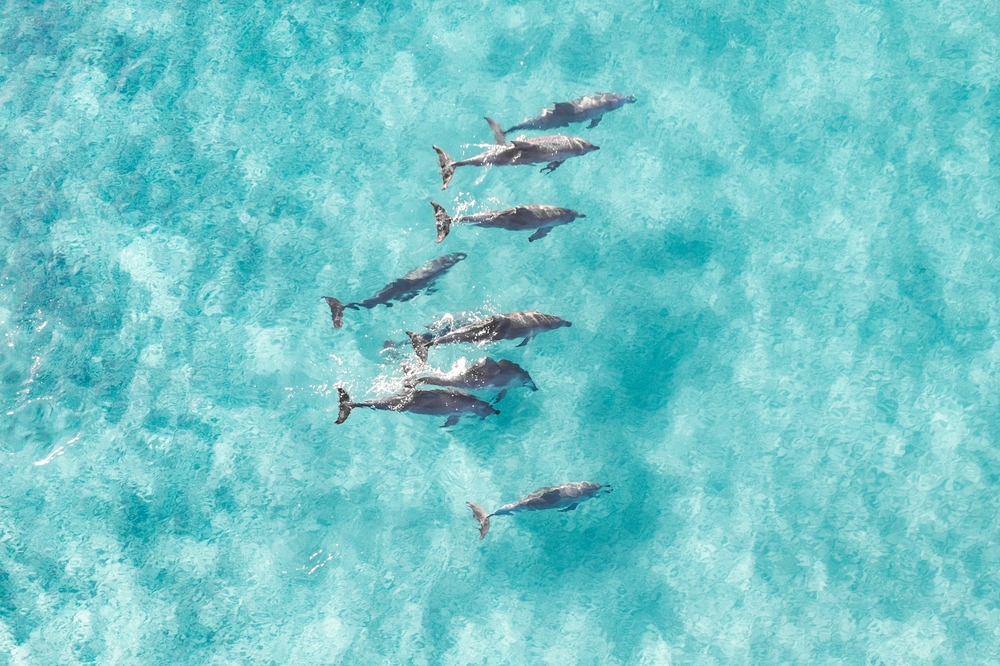
Dolphins are social animals known for their intelligence and ability to work together, not just with their pod members, but sometimes with other species as well, such as seabirds. When hunting fish, dolphins often drive schools up to the surface, where seabirds can easily pluck them from the water. This cooperation allows both dolphins and birds to benefit from the abundance of prey, showcasing a unique form of interspecies collaboration in the wild. The sight of dolphins and seabirds working in tandem is a spectacular display of nature’s interconnectedness.
This partnership highlights the adaptability and resourcefulness of ocean creatures as they find ways to improve their hunting success. By working together, dolphins and seabirds optimize their energy expenditure, ensuring that they get the most food with the least effort. Such interactions emphasize the importance of cooperation in the ocean, where resources can be scarce, and survival depends on efficiency. This relationship is a testament to the complex social structures and behaviors that exist in marine environments.
8. The Protective Alliance of Sea Urchins and Algae
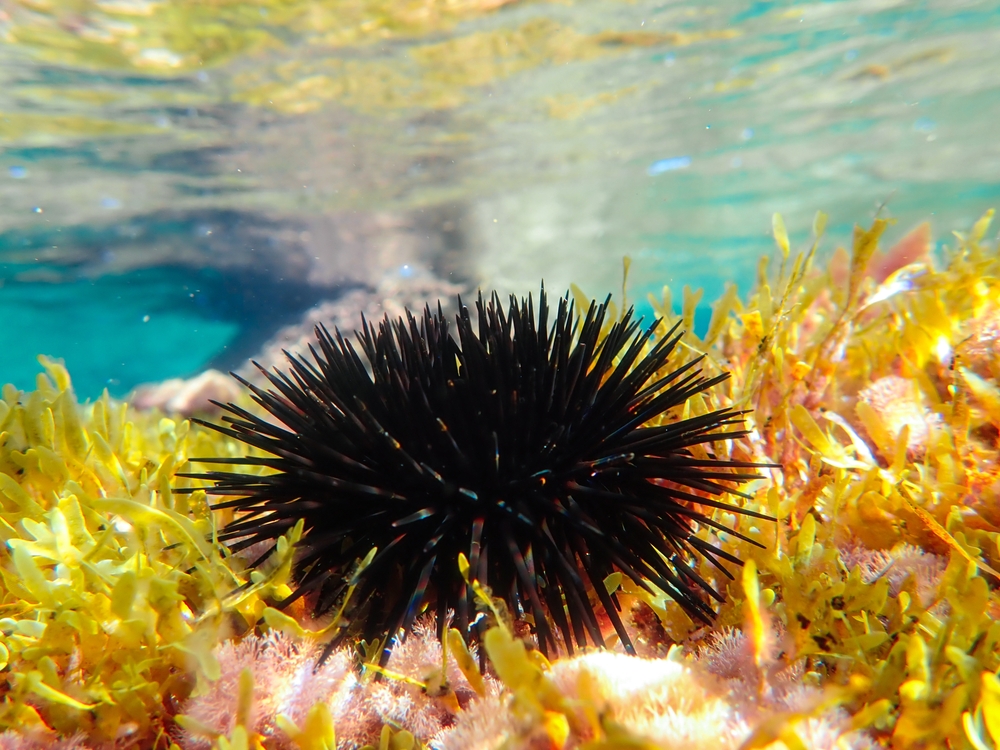
Sea urchins, the spiny inhabitants of the ocean floor, often form a mutually beneficial relationship with algae. The urchins graze on algae, preventing it from overgrowing and suffocating coral reefs, while the algae provide a food source for the urchins. This interaction helps maintain the balance of marine ecosystems, ensuring that coral reefs remain healthy and capable of supporting diverse marine life. By controlling algae populations, sea urchins play a crucial role in the health and sustainability of their habitat.
However, this relationship can be delicate, as overpopulation of sea urchins can lead to overgrazing, which can harm reef ecosystems. Conversely, a decline in sea urchin populations may result in unchecked algae growth, which can be detrimental to coral health. This underscores the importance of balance and regulation in marine ecosystems, where each species plays a vital role. The relationship between sea urchins and algae exemplifies the intricate web of interactions that sustain life in the ocean.
9. The Competitive Interaction of Starfish and Bivalves
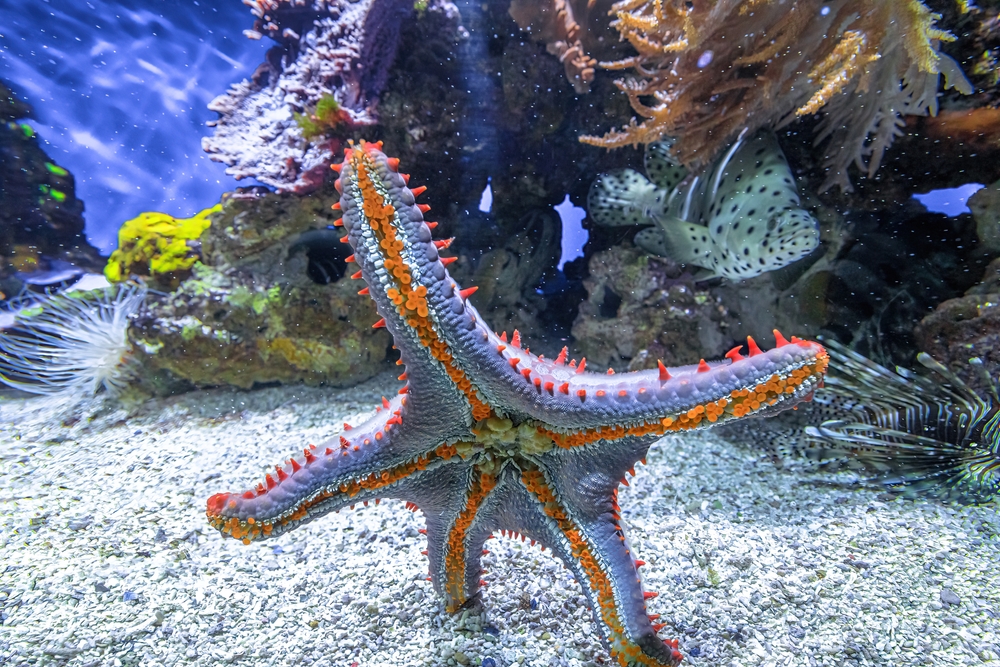
Starfish, or sea stars, are voracious predators known for preying on bivalves such as clams, mussels, and oysters. They use their tube feet to pry open the shells of these mollusks and evert their stomachs into the opening to digest the soft tissues inside. This predator-prey relationship showcases the starfish’s unique feeding mechanism and its role as a key predator in marine ecosystems. The interaction between starfish and bivalves is a prime example of the constant battle for survival in the ocean.
The presence of starfish can significantly impact bivalve populations, influencing the structure and composition of marine communities. Bivalves, in turn, have evolved various defense strategies, such as thicker shells and faster closing mechanisms, to deter predation. This ongoing competition drives the evolution of both species, highlighting the dynamic nature of marine ecosystems. The relationship between starfish and bivalves illustrates the complexity and interconnectedness of ocean life, where each species must constantly adapt to survive.
10. The Unlikely Team of Moray Eels and Groupers
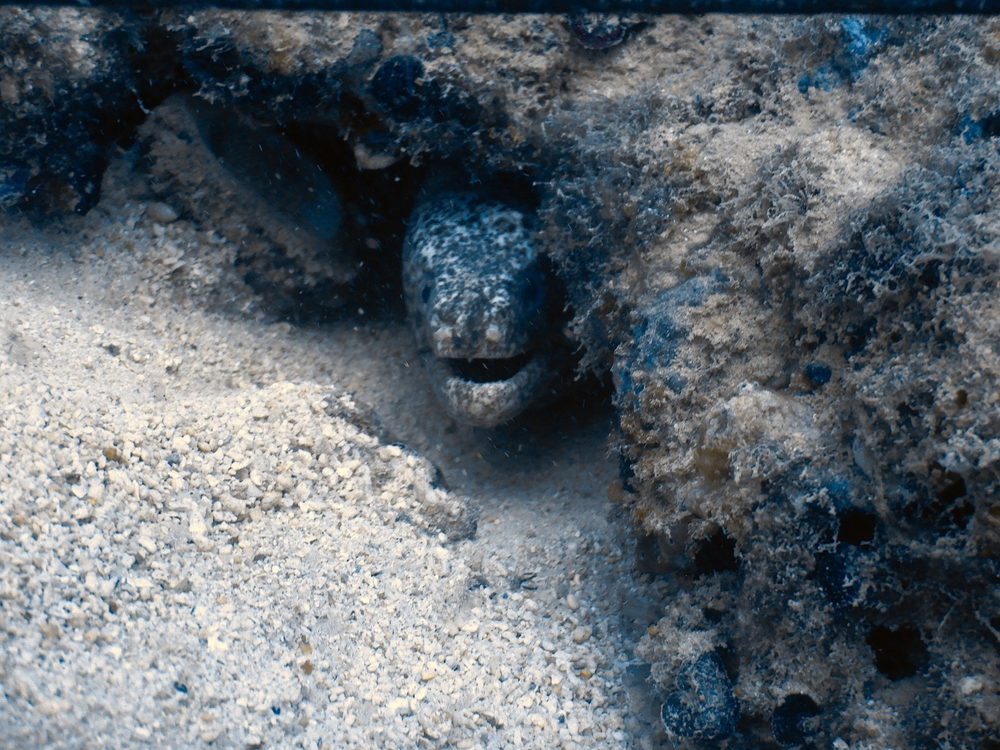
Moray eels and groupers are known to form an uncommon but effective hunting partnership in coral reefs. Groupers, powerful swimmers, team up with the more agile and flexible moray eels to catch prey hidden within crevices. The grouper signals the moray eel, often by shaking its head, to flush out prey from their hiding spots, allowing both predators to feast. This cooperation increases their hunting success, demonstrating the benefits of teamwork in the wild.
The collaboration between moray eels and groupers is a fascinating example of interspecies communication and mutual benefit. By working together, they can exploit resources that would otherwise be inaccessible to them individually. This interaction highlights the adaptability and intelligence of marine predators as they find creative solutions to hunting challenges. The relationship between moray eels and groupers underscores the complexity of ocean ecosystems, where cooperation can lead to increased survival and success.
11. The Predatory Balance of Jellyfish and Small Fish
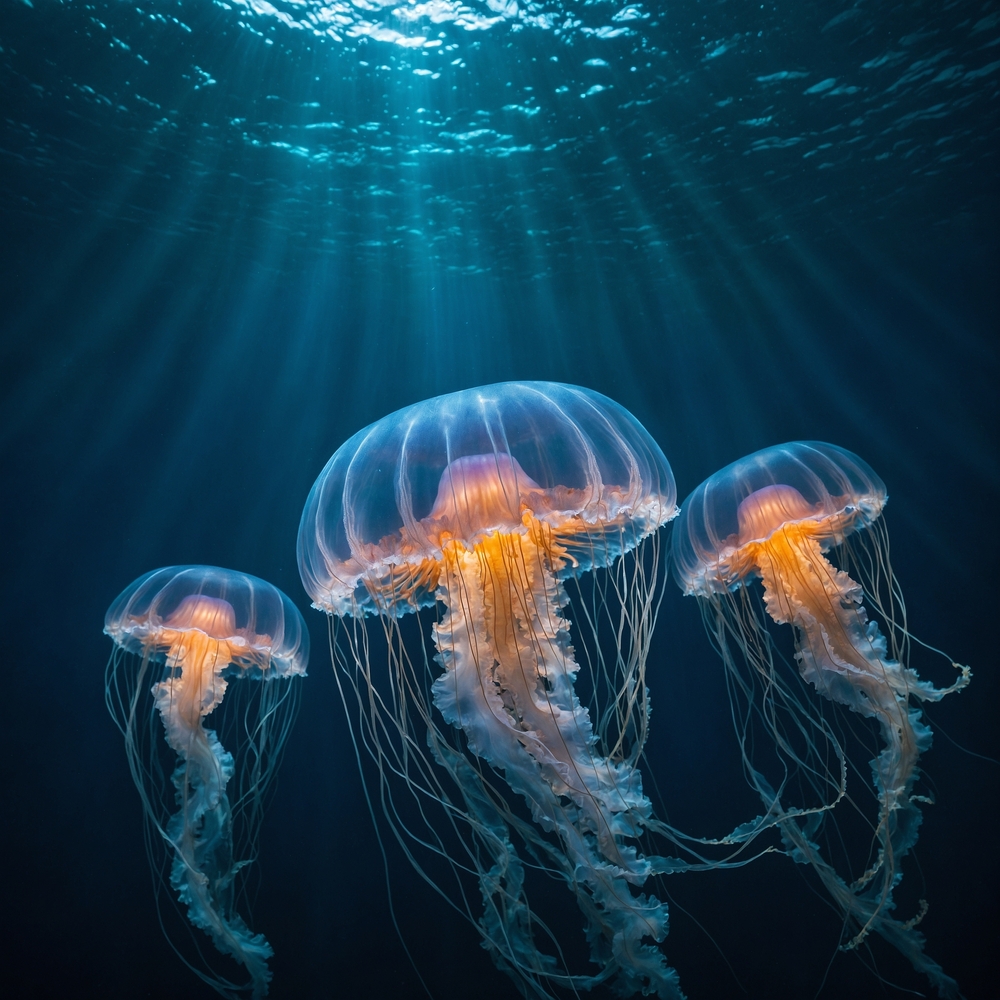
Jellyfish are gelatinous creatures that drift through the ocean, feeding on small fish, plankton, and other marine organisms. Their tentacles contain specialized cells called nematocysts, which deliver venomous stings to capture and immobilize their prey. This predator-prey relationship exemplifies the jellyfish’s role as an important predator in marine ecosystems, helping to regulate populations of smaller organisms. Despite their simple anatomy, jellyfish are highly effective hunters, showcasing the diversity of feeding strategies in the ocean.
Small fish, in turn, have evolved behaviors and adaptations to evade jellyfish predation, such as schooling and swift swimming. This dynamic interaction influences the structure and composition of marine communities, driving the evolution of both predators and prey. The relationship between jellyfish and small fish highlights the intricate balance of ocean ecosystems, where each species plays a vital role in maintaining ecological stability. It exemplifies the complex web of interactions that sustain life beneath the waves.
12. The Cooperative Defense of Shrimp and Sea Cucumbers
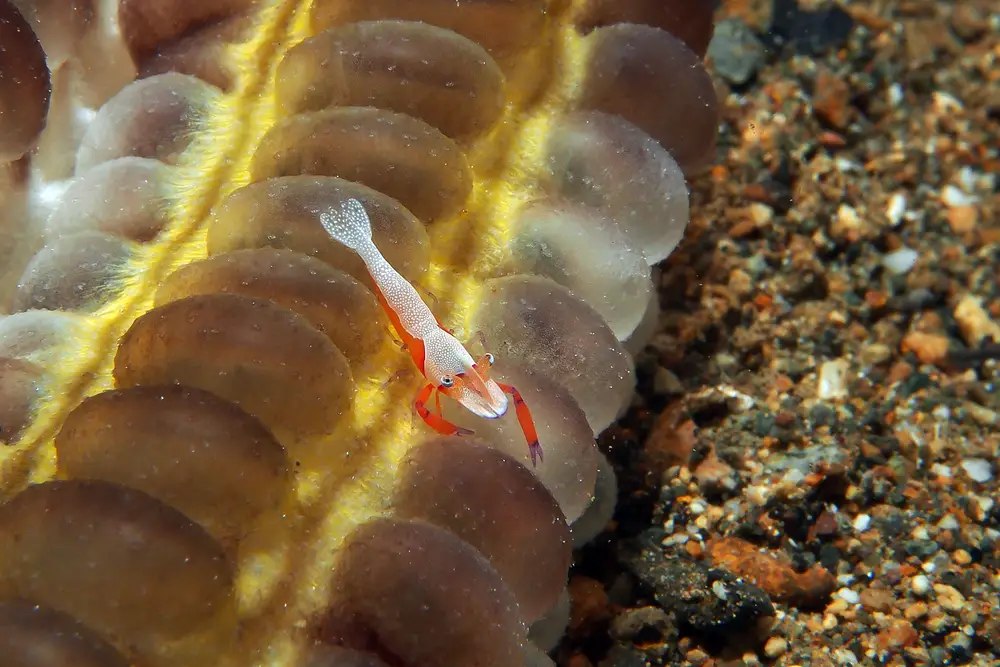
Some species of shrimp form an interesting symbiotic relationship with sea cucumbers, where the shrimp gain protection, and in return, help clean the sea cucumber. The shrimp live on or near the sea cucumber, feeding on parasites and dead skin, while benefiting from the safety offered by their host’s large size and unique defense mechanisms. This mutualistic interaction showcases the shrimp’s role as a cleaner and the sea cucumber’s role as a protector in marine ecosystems.
The collaboration between shrimp and sea cucumbers underscores the adaptability and resourcefulness of ocean creatures as they find ways to coexist and benefit from each other. This relationship highlights the importance of cooperation in the ocean, where resources can be scarce, and survival depends on efficiency. The interaction between shrimp and sea cucumbers demonstrates the complex and interconnected nature of marine ecosystems, where each species contributes to the health and sustainability of their environment.
13. The Predatory Dance of Sea Snakes and Fish
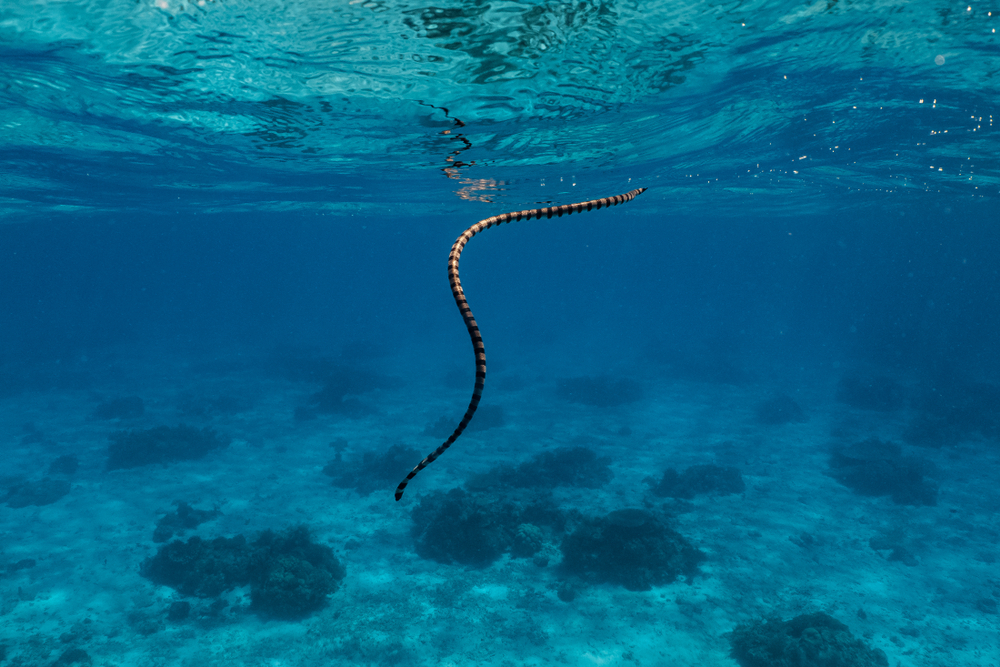
Sea snakes are venomous predators that specialize in hunting fish, using their potent venom to subdue their prey quickly. These reptiles have evolved to thrive in marine environments, with adaptations such as paddle-like tails for swimming and the ability to hold their breath for extended periods. The predator-prey relationship between sea snakes and fish is an example of the ongoing battle for survival in the ocean, where each species must constantly adapt to the challenges of life underwater.
Fish, in turn, have developed various defense strategies to evade predation by sea snakes, such as schooling behavior and rapid bursts of speed. This dynamic interaction influences the structure and composition of marine communities, driving the evolution of both predators and prey. The relationship between sea snakes and fish highlights the complexity and interconnectedness of ocean ecosystems, where each species plays a vital role in maintaining ecological stability. It exemplifies the intricate web of interactions that sustain life beneath the waves.
